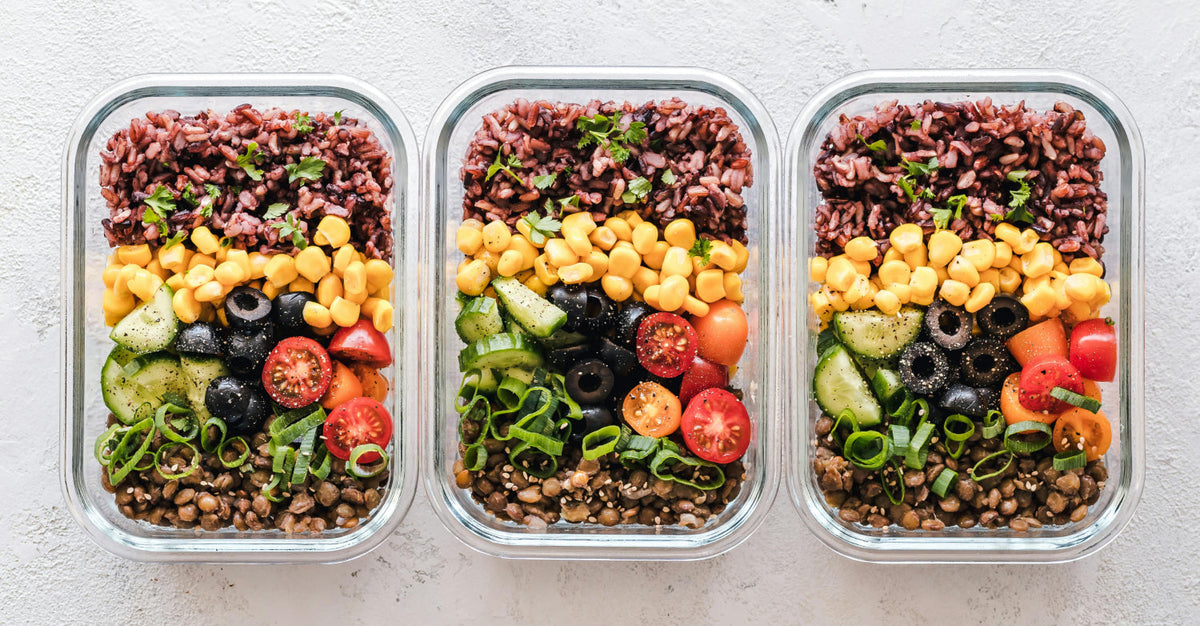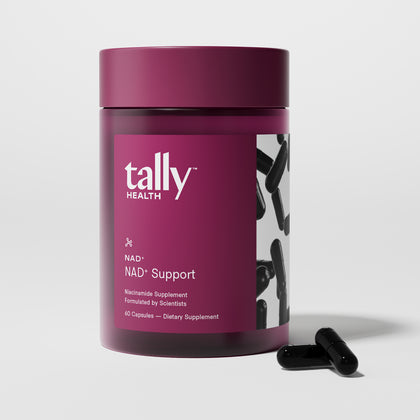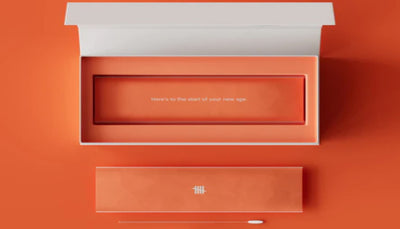

When it comes to keeping your food fresh, safe, and delicious, your choice of storage container matters more than you might think. The material you use to store leftovers, pack lunches, or meal prep for the week can affect not just convenience—but also the quality and safety of your food.
At Tally Health, we know that long-term health is built on everyday choices. From the meals you cook to the containers you use, even small habits can add up to major wellness wins. So, let’s unpack the science (and practicality) behind two of the most popular storage options: glass vs. stainless steel food containers.
The Case for Glass Food Containers

Glass food containers have long been a kitchen favorite—and for good reason.
Pros:
Non-toxic and inert: Glass doesn’t leach chemicals or retain odors, making it one of the safest materials for storing food.
Microwave and oven safe: Most glass containers (without plastic lids) are both microwave safe and oven safe, ideal for reheating meals directly.
Transparent and easy to clean: You can see your leftovers at a glance and easily spot when it’s time to clean out the fridge.
Durable and long-lasting: With proper care, glass containers can last for years, helping you save money and reduce waste.
Cons:
Heavier and breakable: Not ideal for travel or daily lunch boxes.
Not all lids are created equal: Plastic lids may crack, warp, or stain over time, which can affect the airtight seal and leakproof quality.
Best for: Home use, meal prepping, reheating in the oven or microwave (without a plastic lid), and maintaining food freshness.
The Case for Stainless Steel Food Containers

Stainless steel food containers are quickly gaining popularity for their durability, sustainability, and sleek design.
Pros:
Lightweight and durable: Unlike glass, stainless steel won’t shatter, chip, or crack—making it perfect for on-the-go meals, kids’ lunches, or outdoor dining.
Sustainable and long-lasting: Stainless steel is 100% recyclable, corrosion-resistant, and built to last—making it one of the most eco-friendly options available.
Odor and stain resistant: It doesn’t absorb smells or colors from foods like tomato sauce or curry.
Temperature versatile: Keeps hot foods warm and cold foods chilled longer than most plastic containers.
Cons:
Not microwave safe: Metal can’t be used in the microwave, which limits some reheating options.
Opaque: You can’t see what’s inside unless you open the lid.
Higher price point: Quality stainless steel containers can cost more upfront, though they pay off in longevity.
Best for: Travel, kids’ lunches, outdoor use, and sustainable kitchens looking to reduce plastic waste.
What About Plastic Food Containers?

For decades, plastic containers have been the go-to for storing food, leftovers, and lunch boxes — mainly because they’re cheap, lightweight, and easy to stack. But when it comes to health, safety, and sustainability, plastic doesn’t hold up as well as glass or stainless steel.
Pros:
Lightweight and affordable: Easy to carry, store, and replace.
Wide variety of sizes and shapes: Perfect for compact, easy storage.
Leakproof options available: Modern plastics often come with airtight lids to help keep food fresh.
Cons:
Can leach chemicals: Some plastics may release BPA, phthalates, or microplastics and nanoplastics—especially when exposed to heat from the microwave or dishwasher.
Not oven safe: Most plastics warp or melt under high heat.
Stains and odors: Tomato sauce, curry, and oils can leave marks and smells that don’t wash out easily.
Less durable and less sustainable: Plastic breaks down faster, creating more waste over time.
Best for: Short-term food storage or lightweight travel—but avoid heating or long-term use to protect your food quality and health.
Which Type Should You Choose?

Ultimately, the best food storage containers depend on your lifestyle:
If you meal prep often, want something oven and microwave safe, and don’t mind extra weight, glass might be your go-to.
If you’re all about durability, leakproof performance, and sustainability, stainless steel is a smart long-term investment.
Some households even keep a mix of both—glass for home use and stainless steel for travel, lunches, and outdoor meals.
Food Safety and Longevity Go Hand-in-Hand

No matter which you choose, proper care is key:
Always check that lids provide an airtight or leakproof seal.
Avoid harsh cleaners that can scratch or weaken materials.
Store food promptly and safely to preserve freshness and prevent spoilage.
A healthy kitchen doesn’t just rely on what’s inside your food—it’s also about how you store and protect it.
In short: Whether you’re choosing between glass or stainless steel food containers, both can help you live—and store—more sustainably. Combine smart storage with daily wellness choices, and you’ll build habits that last a lifetime.
References
Moura et al. Consumers' practices and safety perceptions regarding the use of materials for food preparation and storage: Analyses by age group. Food Chem Toxicol 2023; https://doi.org/10.1016/j.fct.2023.113901
Harray et al. Plastics in human diets: development and evaluation of the 24-h Dietary Recall - Plastic Exposure and the Dietary Plastics Score. Front Nutr 2024; https://doi.org/10.3389/fnut.2024.1443792
Marfella et al. Microplastics and Nanoplastics in Atheromas and Cardiovascular Events. N Engl J Med 2024; https://doi.org/10.1056/nejmoa2309822
Seref and Cufaoglu. Food Packaging and Chemical Migration: A Food Safety Perspective. J Food Sci 2025; https://doi.org/10.1111/1750-3841.70265
Claudio. Our food: packaging & public health. Environ Health Perspect 2012; https://doi.org/10.1289/ehp.120-a232
What are the pros and cons of glass food containers?
Glass food containers are non-toxic, microwave and oven safe, transparent, and long-lasting—but they’re heavier, breakable, and not ideal for travel.
What are the benefits of stainless steel food containers?
Stainless steel containers are lightweight, durable, sustainable, odor-resistant, and temperature versatile. However, they’re not microwave safe, opaque, and can be more expensive upfront.
Are plastic food containers safe for storing food?
Plastic containers are lightweight and affordable, but some may leach chemicals like BPA or phthalates—especially when heated. They’re not oven safe, can stain and absorb odors, and are less durable and sustainable than glass or stainless steel.











